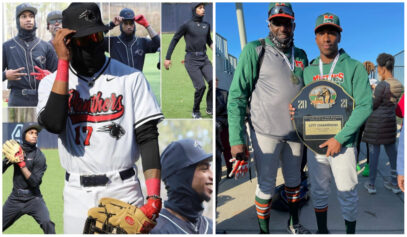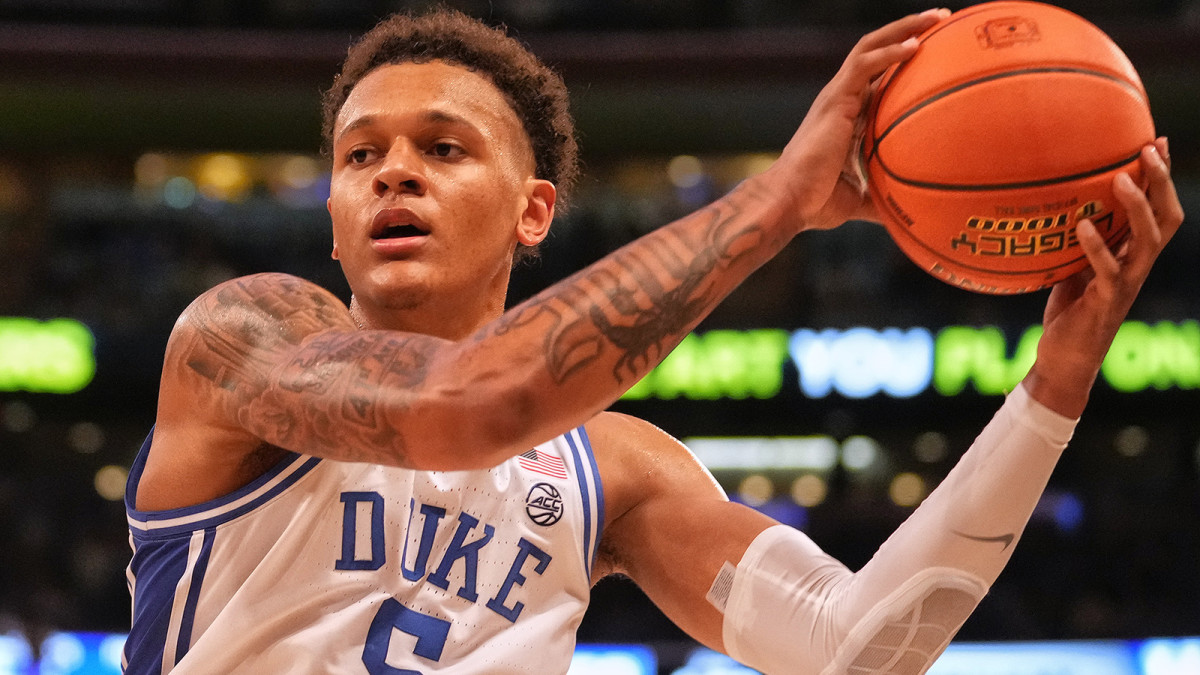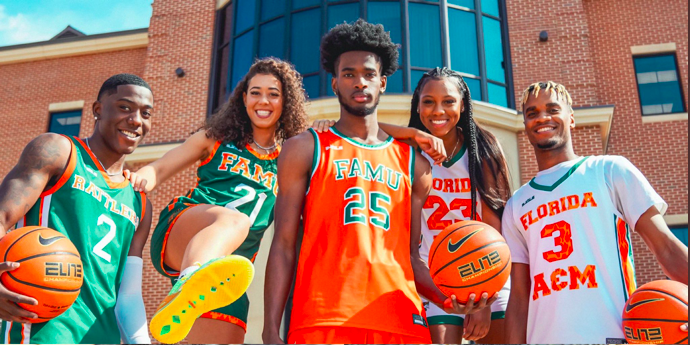No Blacks On This Blacktop
The legacy of the historically black college or university as it pertains to the NCAA Tournament is one that is often overlooked and seldom appreciated. That can be largely attributed to the fact that African-American collegiate basketball players were not allowed to compete on equal footing with their white counterparts for many decades.
According to historical information gleaned from the official website of The Black Fives era, blackfives.org, African-Americans were introduced to organized basketball on a wide scale in 1904, about 13 years after the venerable Dr. Richard Naismith invented the game in Springfield, Massachusetts using a ball, ladder and a rickety fruit basket.
From that time, until the integration of the professional game in the 1940's, basketball was segregated.This racial exclusion included collegiate athletics as well.
We Got Our Own Thing
Among the very first HBCU basketball competitors were the Howard University Bisons, Lincoln University of Pennsylvania, Wilberforce University and Hampton Institute. Competitive programs at Morehouse, Tuskegee, and Morgan State would follow.
In 1916, the C.I.A.A. was created as a league in which these teams could compete against one another because their white counterparts did not wish to compete against them. The NAIA would allow black schools to compete in 1951. The NCAA did not follow suit until 1957.
Today, the C.I.A.A. competes on the Division II level of play, but these black college teams were some of the very best hardwood heroes back in the day. West Virginia State's Earl Lloyd is considered the Jackie Robinson of basketball, the first African-American NBA player to sign a contract in 1950. He was proof that HBCU's had an undeniable pool of pro talents ready to invade the NBA and raise the quality of the league. The very best African-American hoop stars could still be found at HBCU’s as recently as the early '70s and they had indelible social and athletic impacts on subsequent generations of hoop fans.
Hampton's Rick Mahorn was a relentless rebounder, defensive enforcer and staple of the "Bad Boy" Detroit Pistons who won two c'hips during the franchise's Golden Era '80s.
Virginia Union's Charles Oakley never won a c'hip, but his come-up was nonetheless impressive. He set the standard for defensive toughness during his stints with the pre-championship Jordan Bulls and the rough-and-rugged '90s Knicks who were perennial title contenders during Oakley's 11-year run.
Ben Wallace went to the same school as Oakley, but his impact on the 2004 Piston's NBA Championship squad as an intimidating paint presence and rebounder made him Mahorn 2.0.
Grambling State was known for its historic football programs, but Willis Reed made his mark as a two-time NBA champion and all-time great with the New York Knicks after leaving the Louisiana school. Reed embodied the resilience, spirit and determination of HBCU's and his most defining moment took place on May 8, 1970 during Game 7 of the 1970 NBA finals against the LA Lakers in Madison Square Garden. Reed was reeling from a severe thing injury and was expected to sit out. Instead, Reed stunned the NBA world and shook the Lakers up by walking on the court during warmups, causing the crowd to erupt and willing the Knicks to greatness.
Let's not forget "Black Jesus" himself Earl "the Pearl" Monroe. The Philly Funkster turned Winston Salem State into his personal playground during his stint there in the '60s and went on to become the standard-bearer for magical, multi-faceted floor generals. In 1973 he teamed up with fellow HBCU baller Reed and won his first NBA title.
It was a golden time for HBCU basketball. The racial obstacles set up for blacks in America, which were designed to hinder black advancement, actually forced the emergence of a gold mine of talented athletes concentrated in the HBCU schools.
Opened Floodgates And Stolen Stars
However, with the increased acceptance of the talent of African-American collegiate stars came a tidal wave of scholarship offers from traditionally white institutions, which culminated in the 1966 Texas Western (now UTEP) team becoming the first NCAA Division I champion to rock an all-black starting five. The band of ballers endured venomous racism, doubt and inner-turmoil to defeat Adolph Rupp’s Kentucky Wildcats team. Ironically, Rupp was openly against the recruitment of black players for the majority of his career and would become one of the last major college holdovers to recruit black players despite seeing their considerable talents up close.
As was often the case with integration and the abolition of Old Jim Crow, time honored African-American institutions would suffer greatly.
African-American teams fielded by Tennessee A&I (NAIA National Champions 1951, 1952 and 1953), Winston Salem State (NCAA Division II National Champions 1967), and Grambling (NAIA Champions 1961) were once considered equal to or better than their white contemporaries, but today Division I basketball programs at historically black colleges and universities are never ranked and usually are among the first to exit the NCAA tournament.
Yet, we cheer for them anyway and hope for the best because most African-Americans are culturally and historically compelled to do so. As the Texas Southern Tigers played the Cal Poly Mustangs in the NCAA tournament on Wednesday, I hoped that there would be some kind of redemption for HBCU basketball. No, I didn't attend an HBCU. But because I fancy myself as being somewhat a sports griot, the idea of a time when the very best black ballers in the land went to black schools and often defeated their white counterparts are a source of pride.
On Friday, North Carolina Central's Eagles play a gifted Iowa State Cyclones basketball team in the NCAA tournament. What do I have to say about that? 'Let’s go Eagles! (clap, clap, clap-clap-clap) Let’s go Eagles!' For me, it isn’t a racial thing. But one of competitive fire and pride.
The last time an HBCU won a game in the NCAA tournament was when 15 seeded Norfolk State University defeated 2 seed Missouri in 2012. Prior to that, Hampton University’s defeat of Iowa State in 2001 was a source of basketball pride for all HBCUs. The victories for Hampton and Norfolk State would serve as moral victories for other black schools who suffer under similar circumstances. However, as any coach could likely tell you, moral victories ultimately amount to fool’s gold in the grand scheme of things.
C.R.E.A.M. (Expansion or Exploitation?)
At the end of the day, it's really all about the Benjamins…baby. ESPN's Dana O'Neil highlighted some interesting financial facts in her article, which was initially published in 2008.
"According to the 2007 budget figures from the Office of Postsecondary Education, Delaware State has the deepest athletics pockets among all HBCUs. Out of 339 Division I institutions, its $17.2 million budget ranks 124th."
In a 2012 article published in Ebony, journalist Chris Wilder pointed out some very interesting stats about black ball players attending white institutions.
"At schools like Villanova and Georgetown, which are generally basketball powerhouses, they field entire teams of Black students. Not just any Black students, but the best b-ball players from around the country. However, as you take a look around their campuses, the basketball players seem to be the only Black students around. It's the exploitation of amateurism at its best. Villanova, for example, has a total student enrollment (undergrad and graduate) of 10,467. Of that, four percent are Black. If you do the math, that’s about 400 students including the 10 Black members of the basketball team. In other words, the basketball team represents 2.5 percent of the school’s entire Black population." Shadow League all-star J.R. Gamble expanded on this evolving dynamic in his well-received piece,"The NCAA And It's Member Schools Are Failing Their Black Male "Student-Athletes."
People might point to Texas Southern’s versatile and athletic center Aaric Murray as an example of a top-tier talent playing on a team fielded by an HBCU, but they may want to pump their breaks. Murray is only attending TSU as a school of last resort as the big man attended LaSalle and West Virginia University before ending up in Houston to play for Coach Mike Davis.
The numbers are sobering to say the least. Are black athletes being used? Well, some would argue mutual exploitation is the life blood of capitalism. So, what does the average Division I HBCU program have to offer black athletes that other school do not? Heritage, history and a curriculum that is in many cases designed specifically for them. What do big time predominately white schools have to offer? Better athletic facilities, more exposure, more televised games and a higher probability of being drafted.
Man, that’s a hard road to hoe for athletic directors at HBCUs. In order to get the better athletics you need better facilities, TV contracts and top competition against which that athlete can hone his or her skills. However, very few top-tier basketball players are going to attend these schools without those things already in place. AD’s are forced to do more with less at these schools and state funding is but a fraction of what it would need to be to make a difference. In the meantime, fans are forced to hope beyond hope that which ever HBCU that makes it to the NCAA tournament will be more than a flash in the pan. Is a Sweet 16 or two too much to ask? Probably. But we’ll continue cheering nonetheless.



